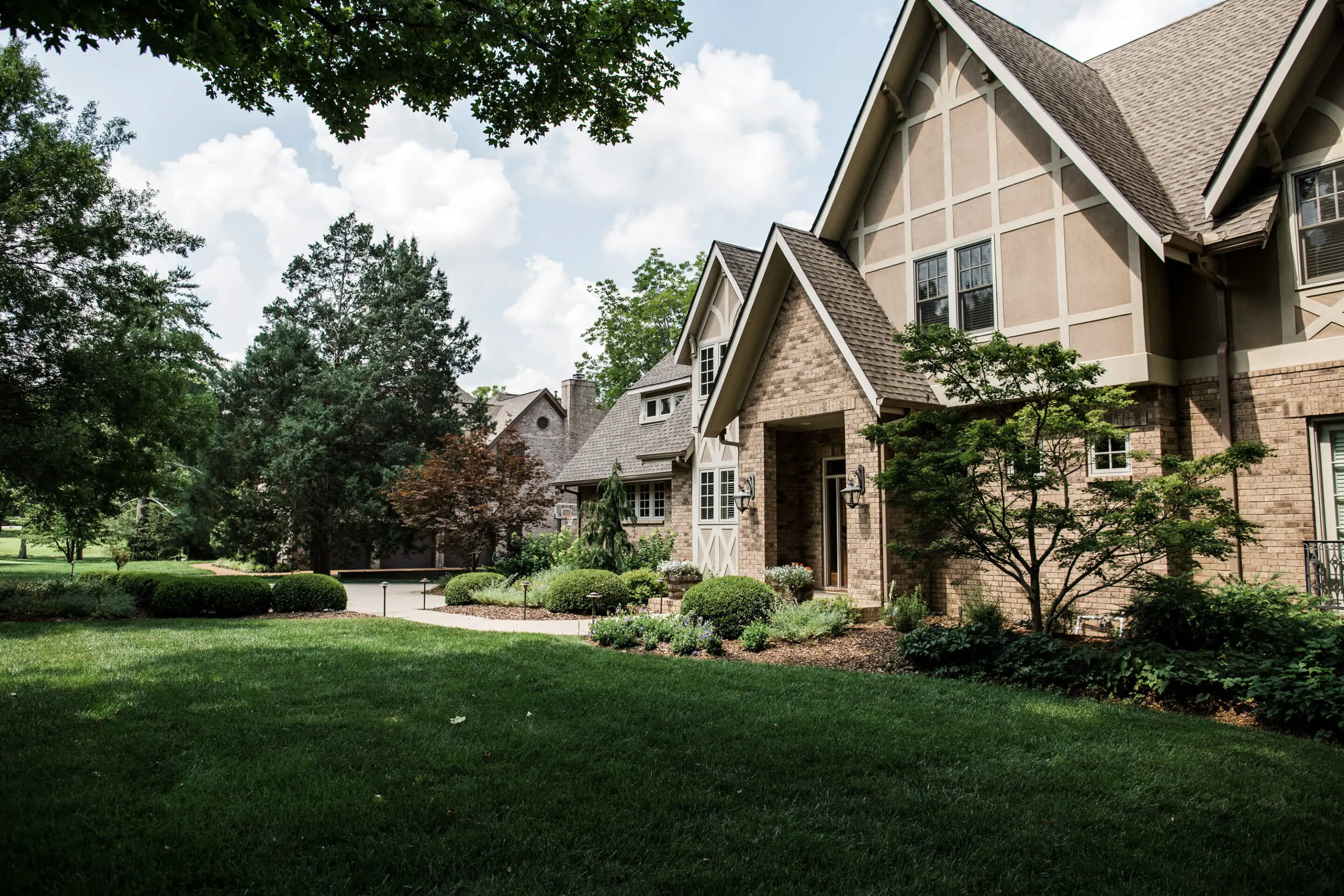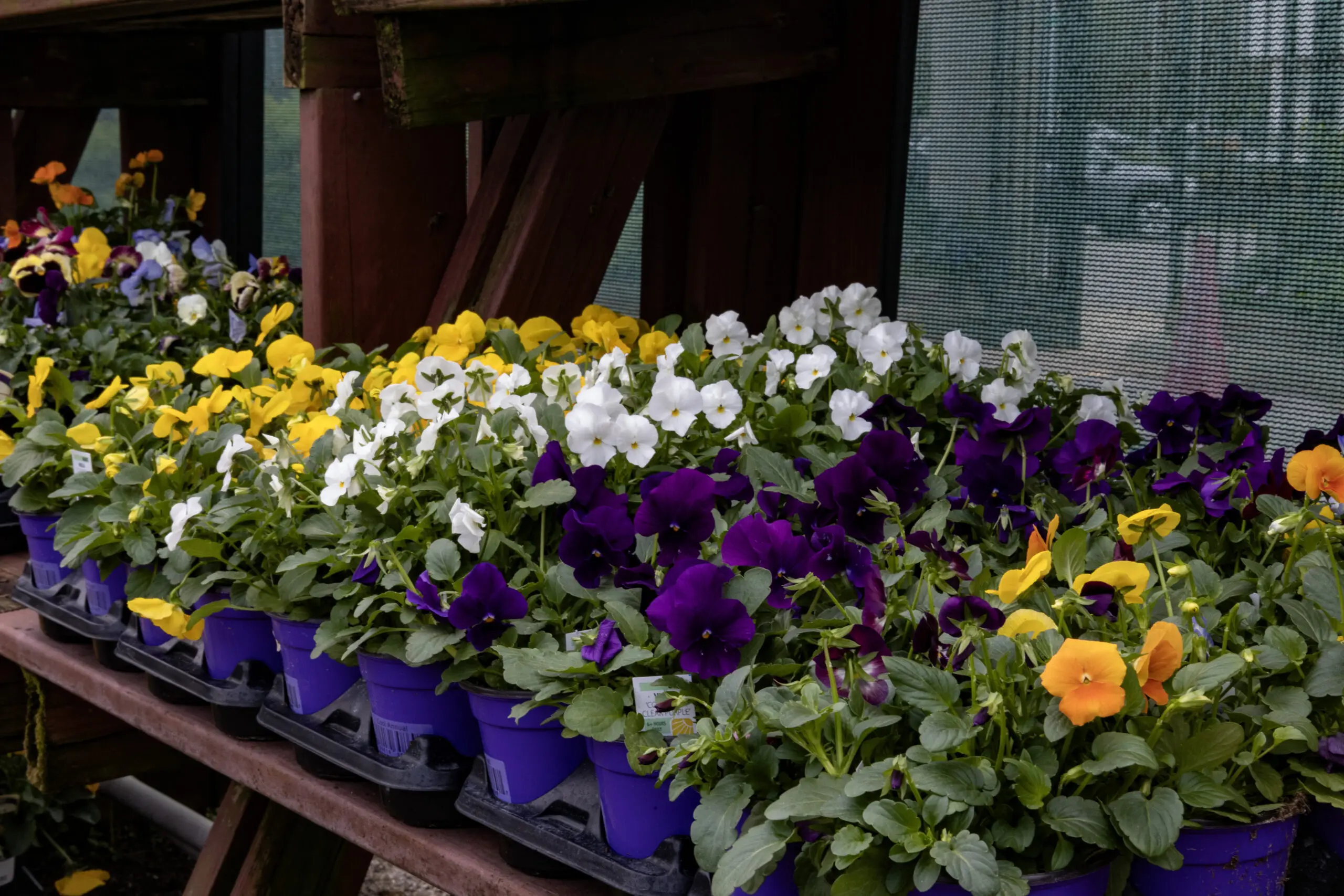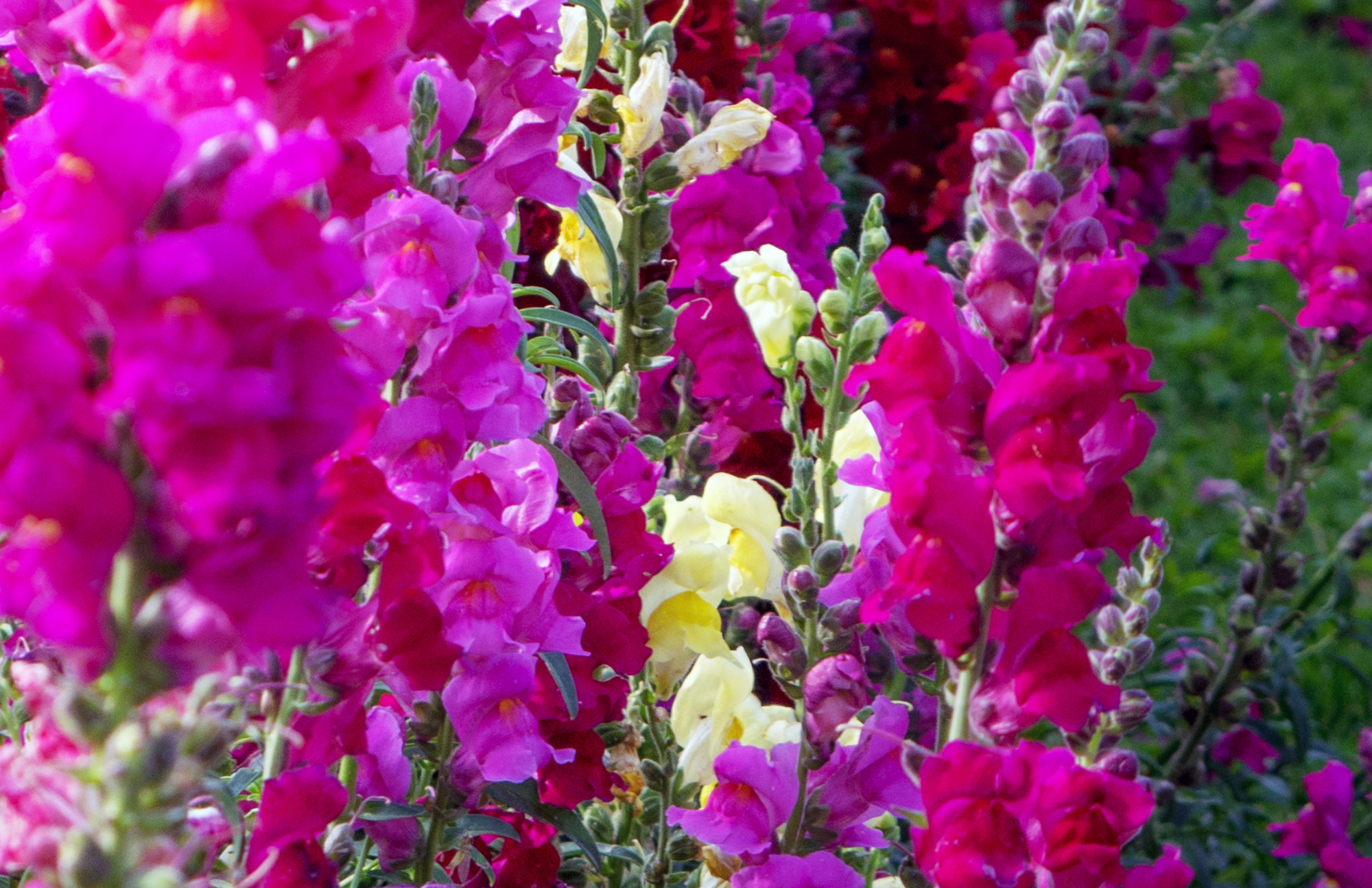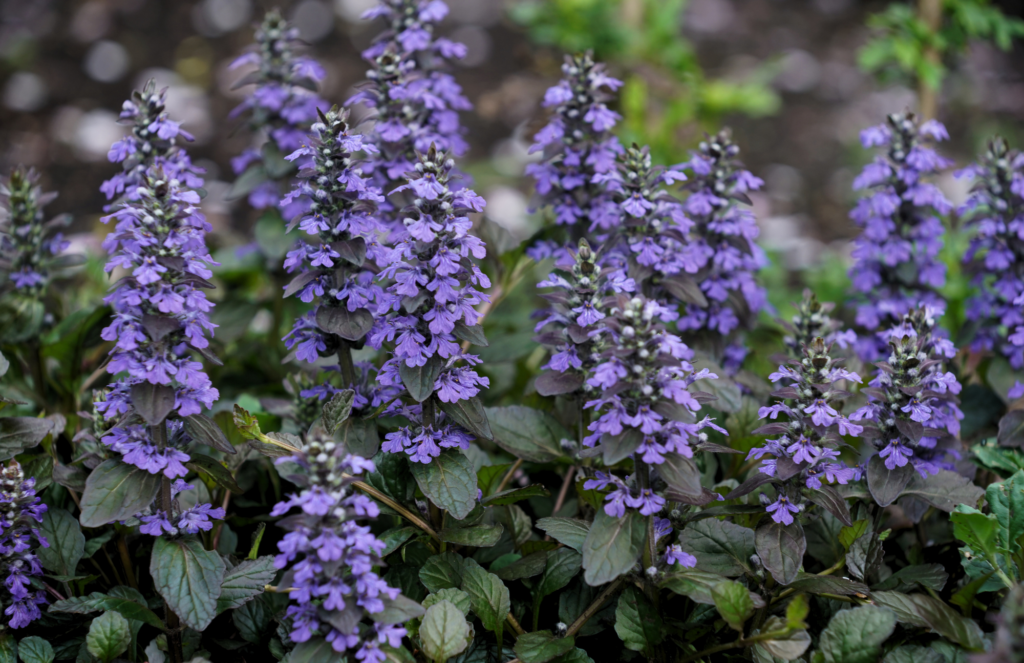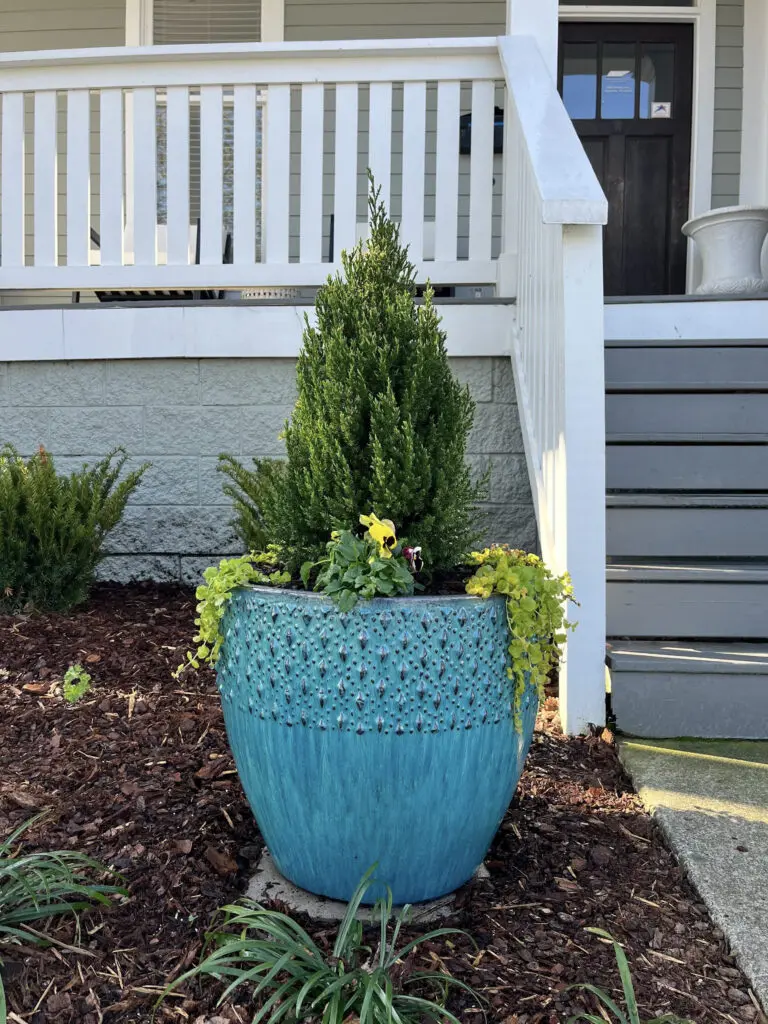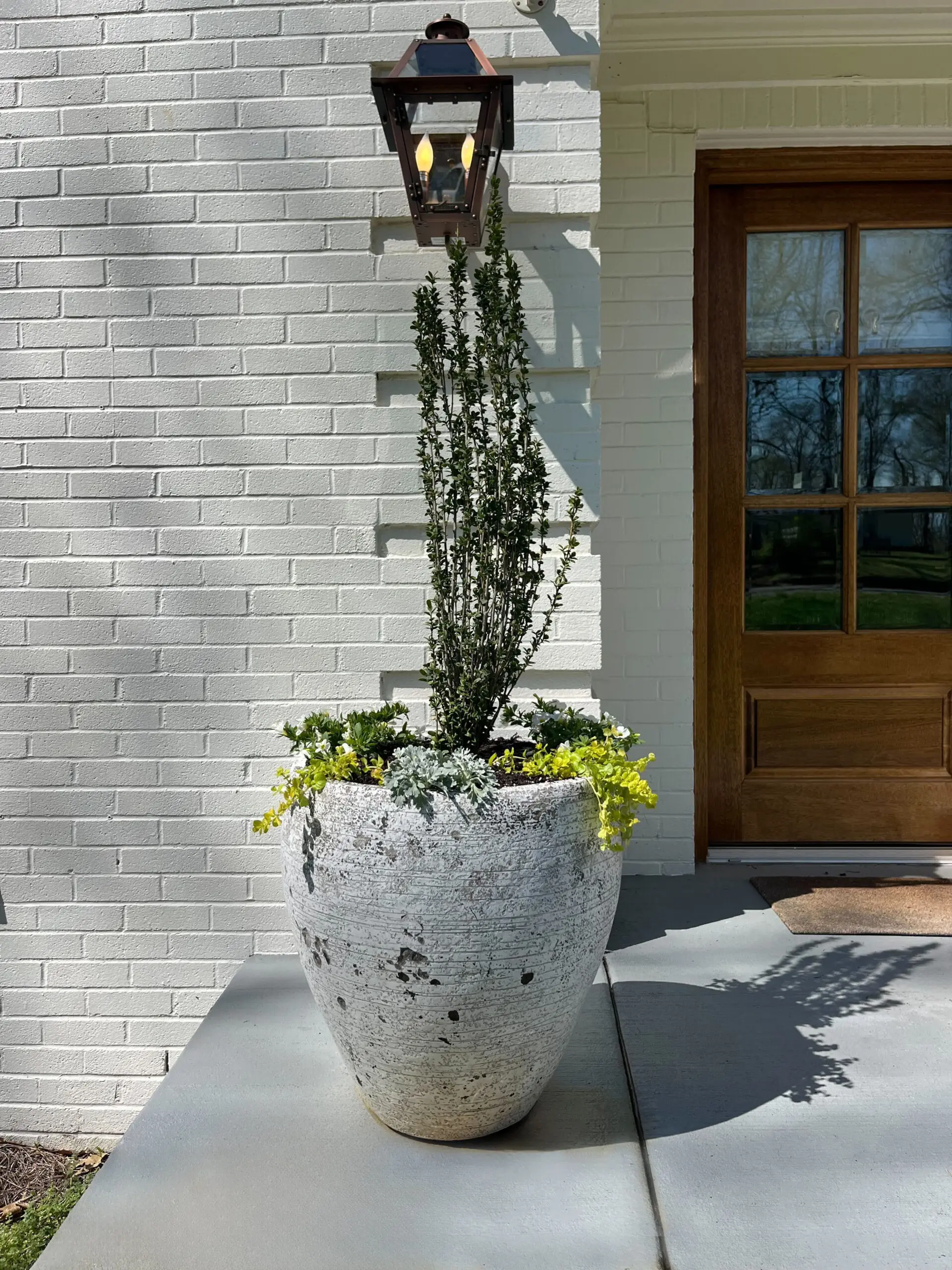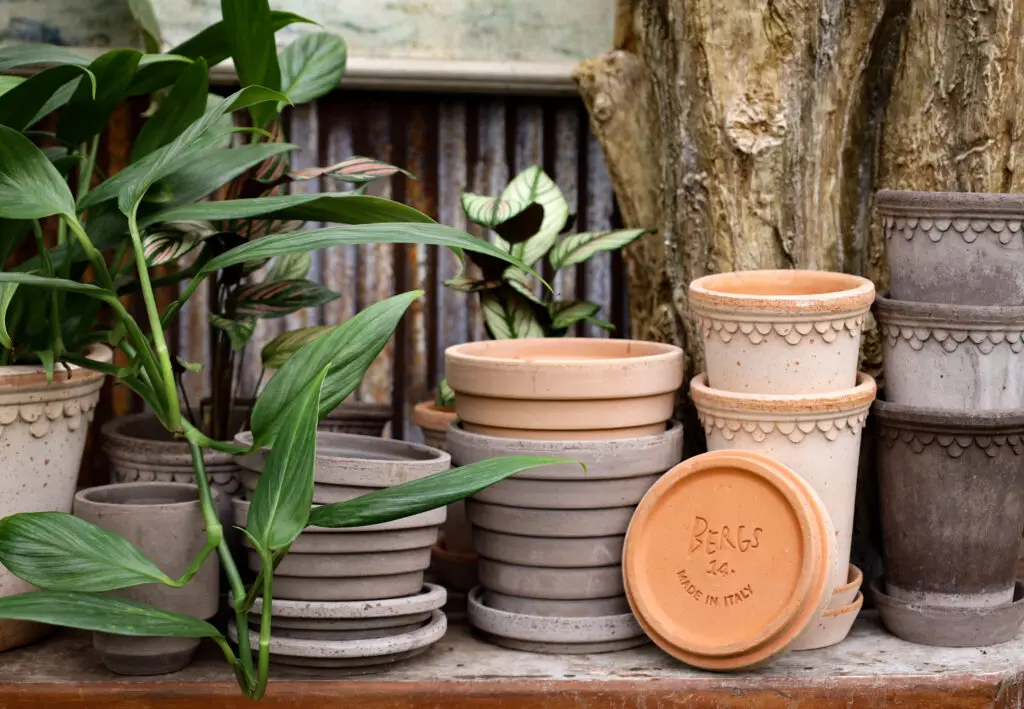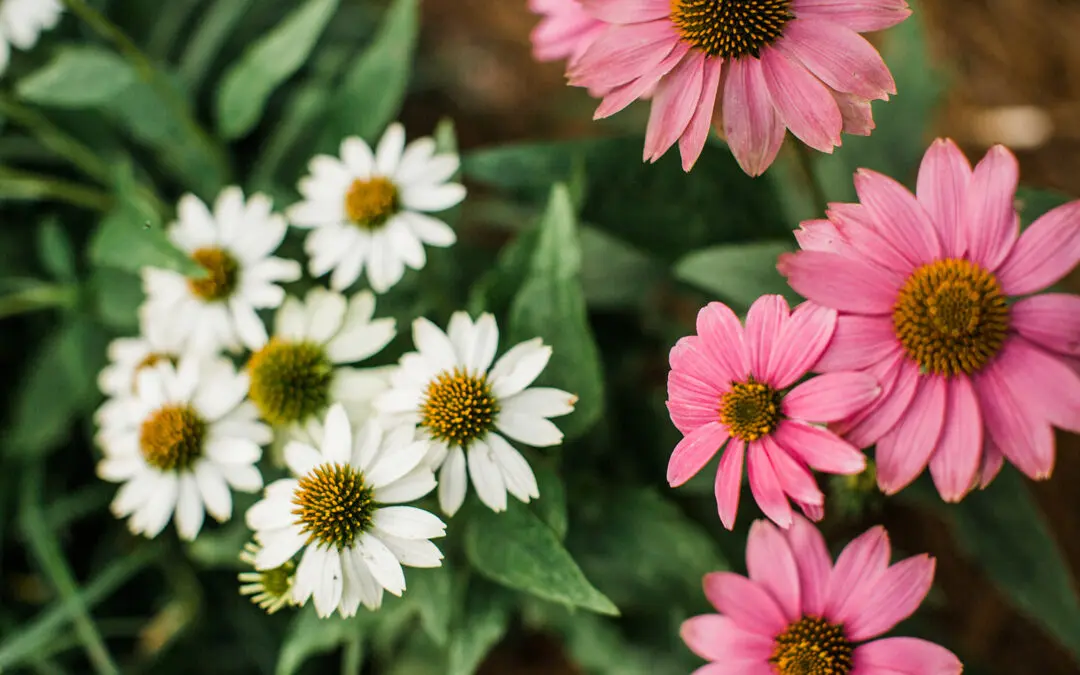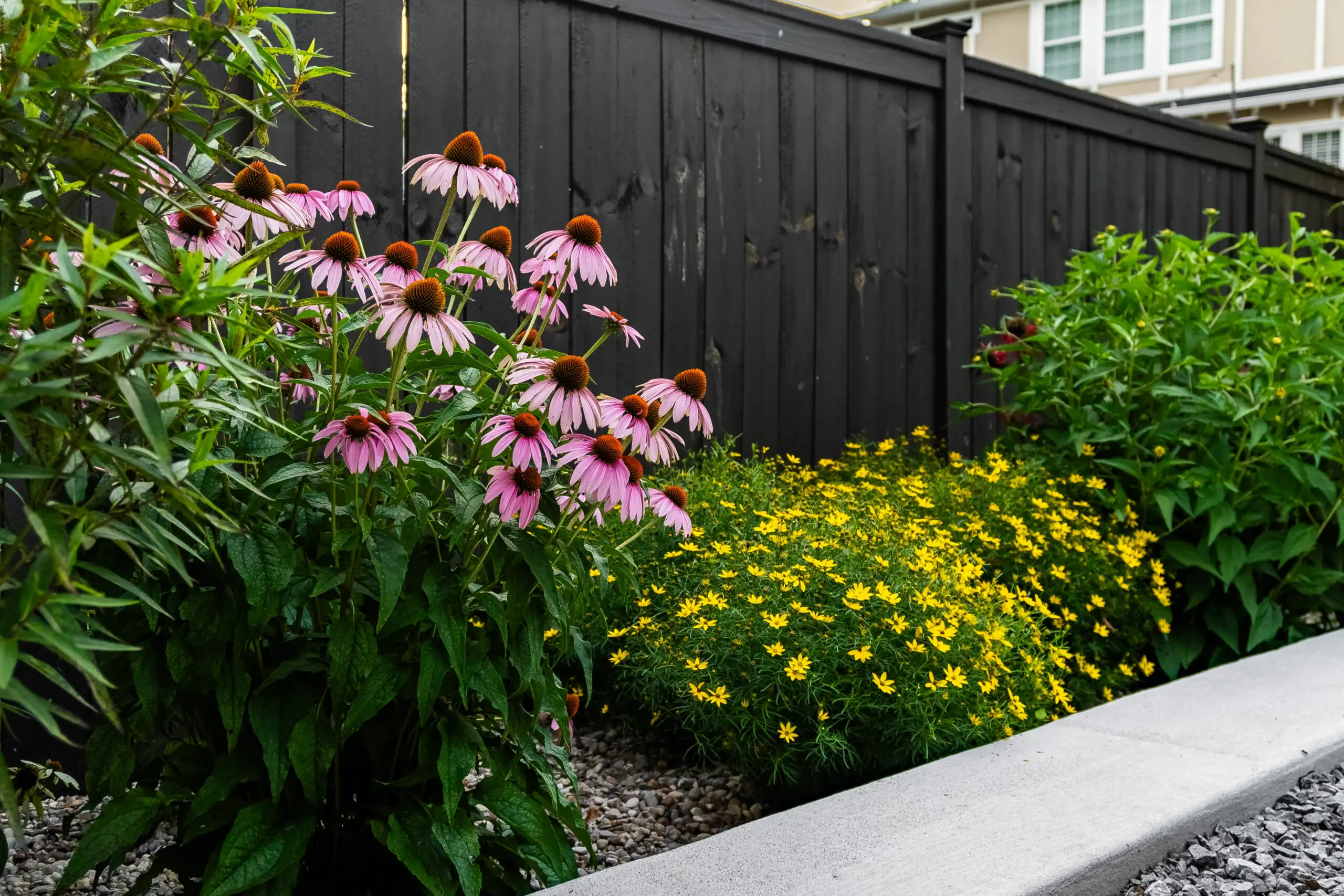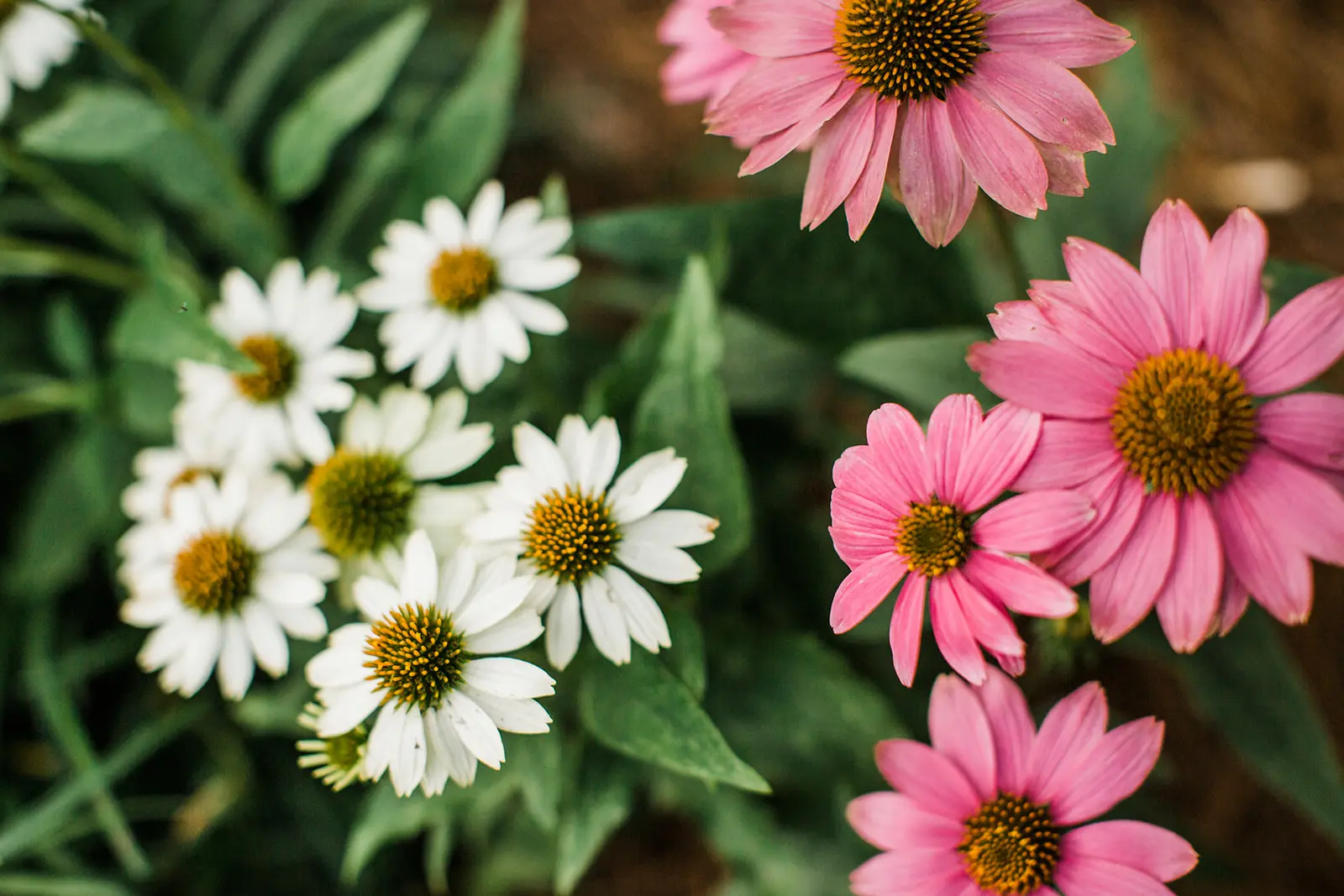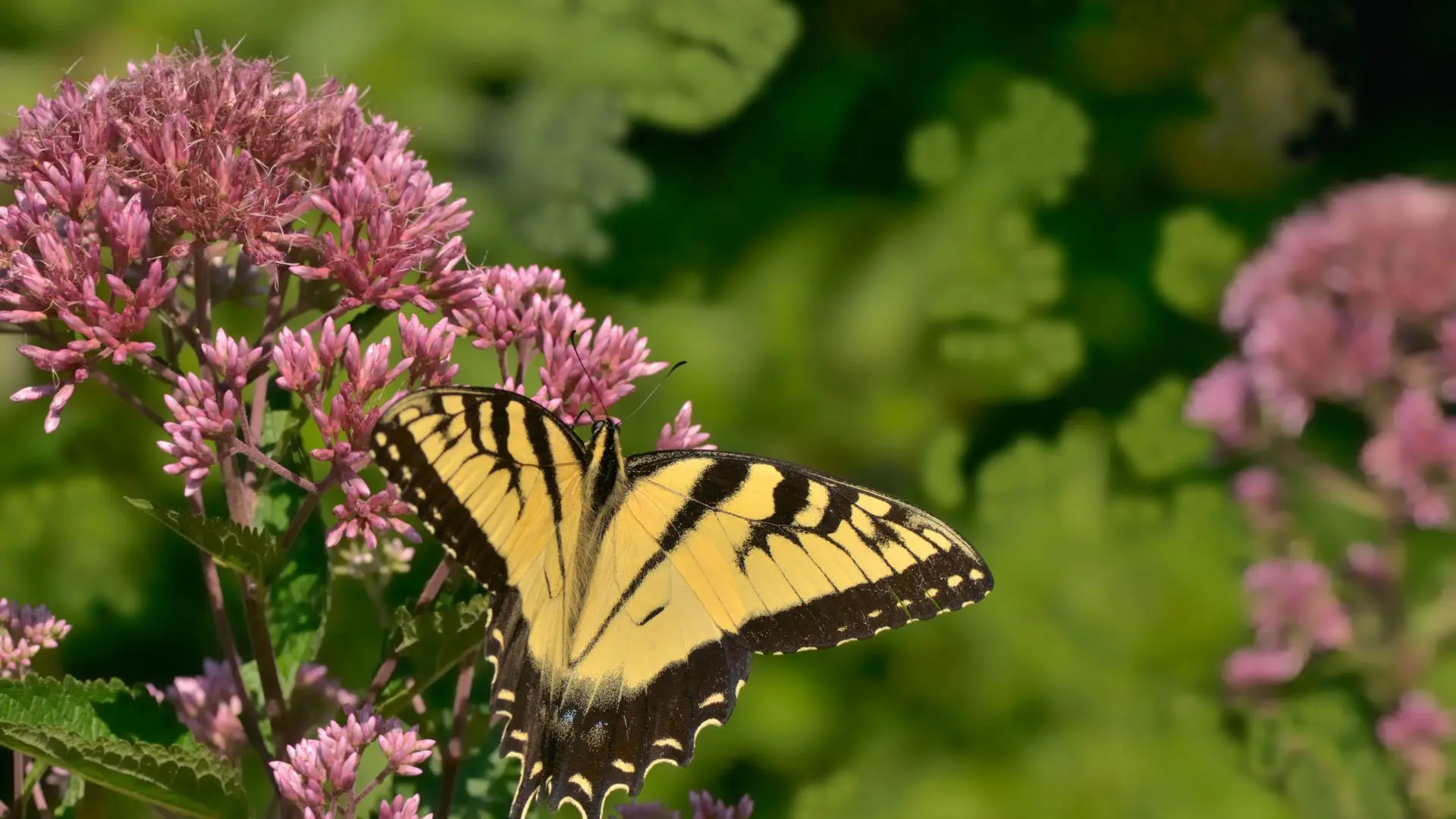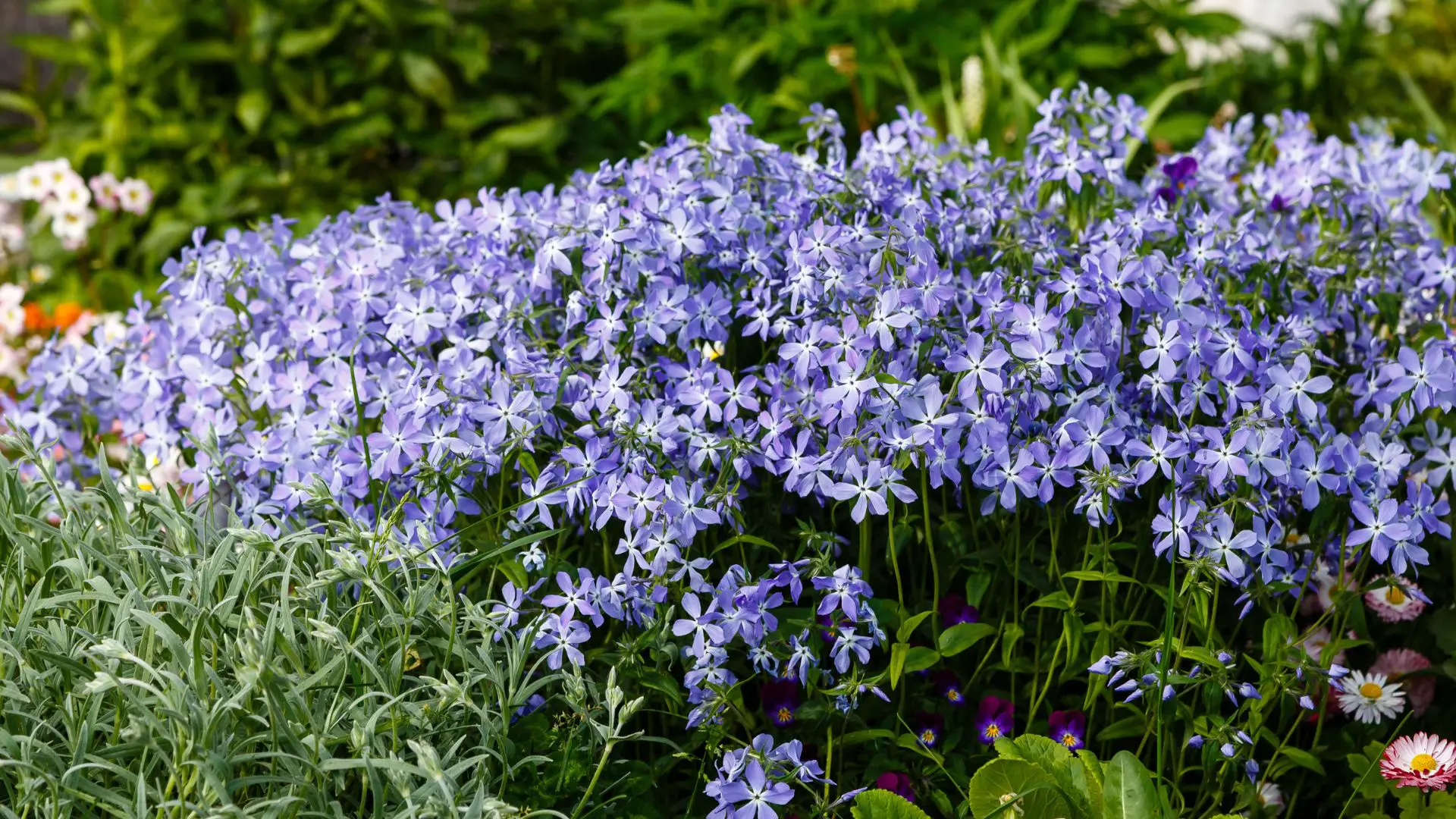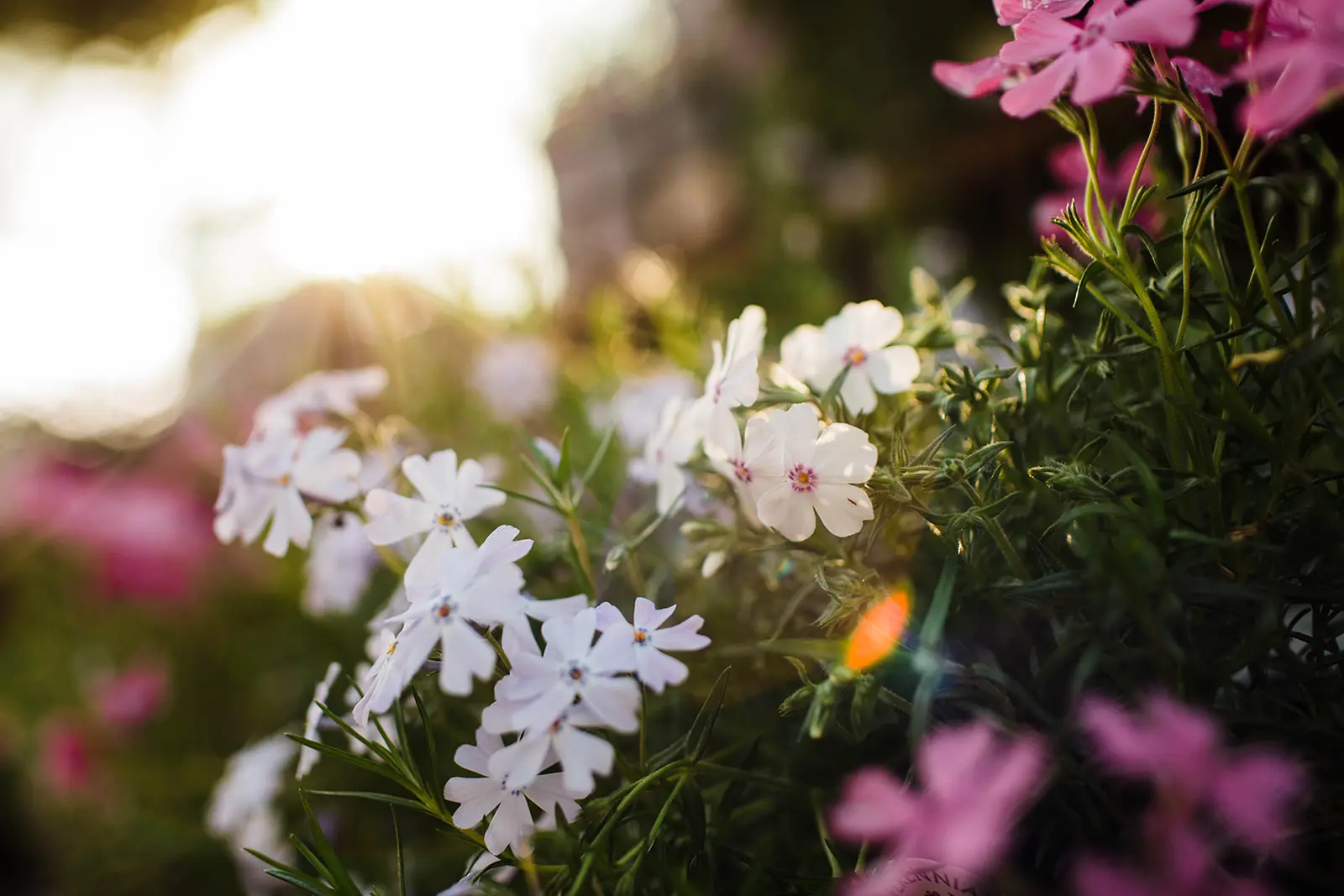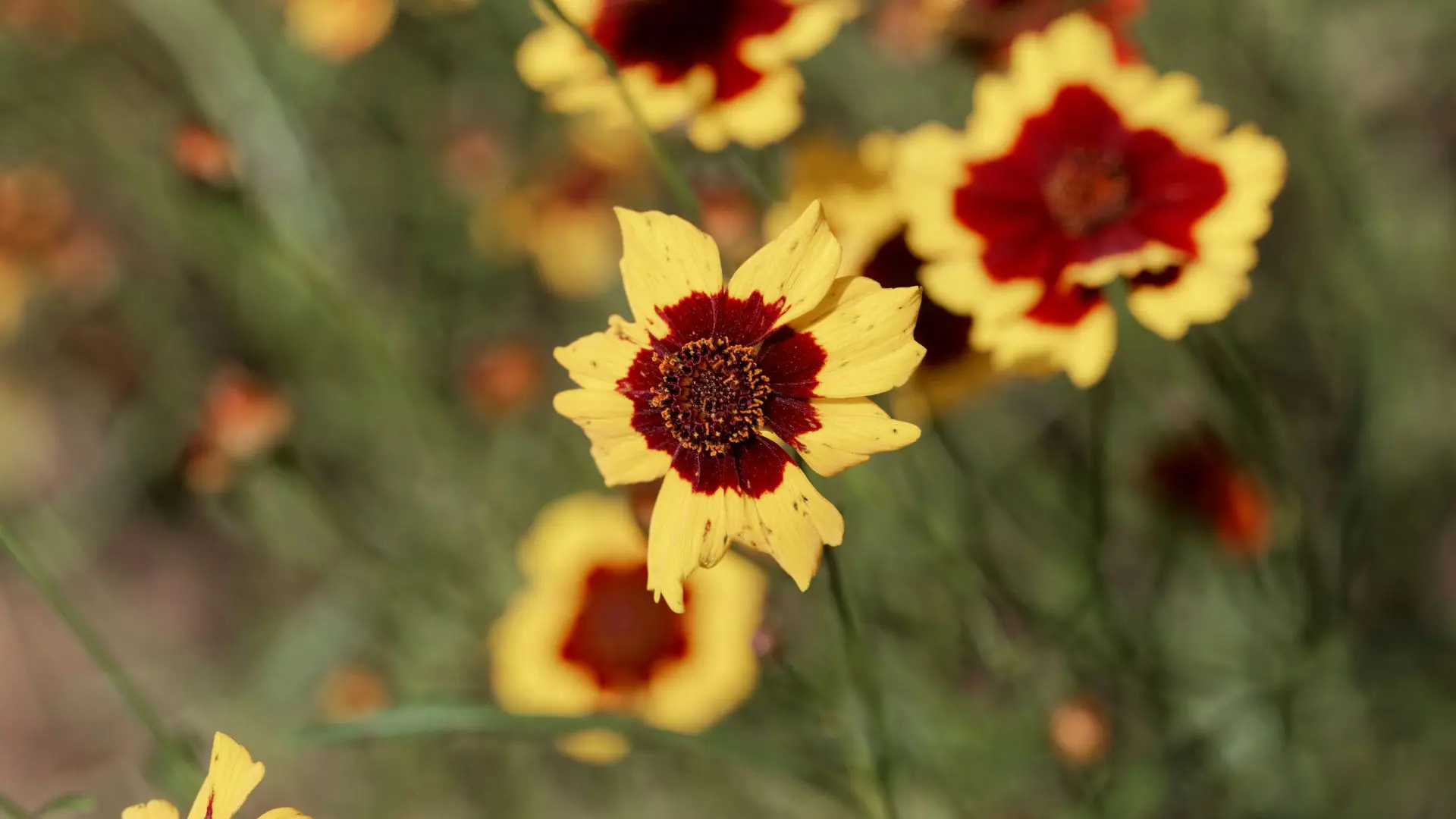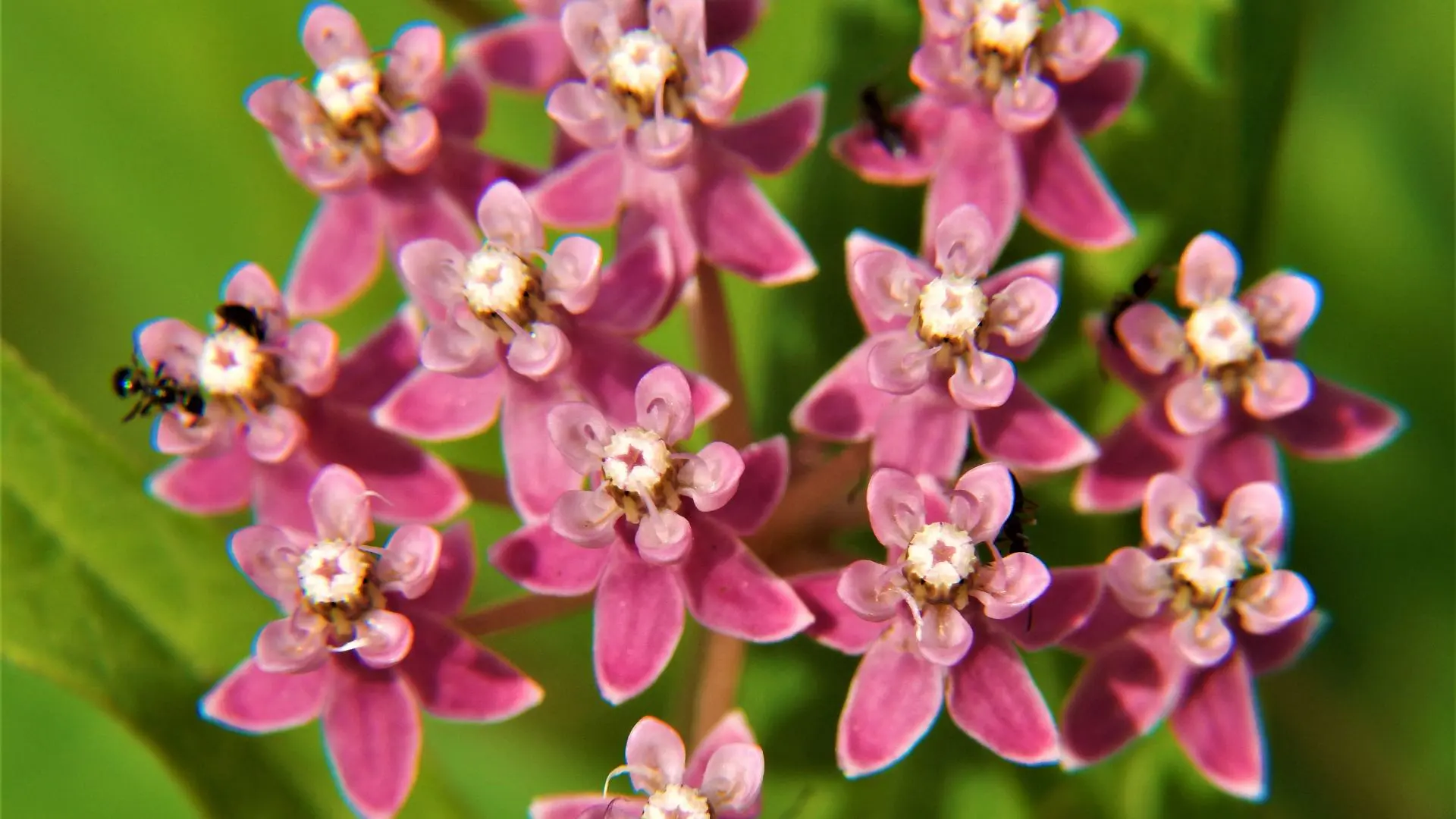
by Gardens of Babylon | Apr 8, 2025
–
Spring has officially sprung, which means warmer weather, longer days, and more time in the garden! What’s the next step for your landscaping? Need some landscaping tips? Check out these easy ways to get your yard in shape:

- Re-seed the damaged or bare areas of the lawn: If your lawn has areas that are damaged or bare, it’s essential to reseed them to promote healthy grass growth and maintain an even appearance. Start by preparing the soil in these areas by loosening it with a rake or garden fork. Then, spread grass seed evenly over the prepared soil, making sure to choose a seed variety appropriate for your climate and soil conditions. Lightly rake the seed into the soil, water thoroughly, and keep the area consistently moist until the new grass establishes itself.
- Mow established cool-season turf grasses weekly or as needed; raise mower height to three to four inches: Regular mowing is crucial for maintaining healthy turf grass. For cool-season grasses, such as fescue or Kentucky bluegrass, mow weekly or as needed to keep the lawn at an optimal height of three to four inches. Adjusting your mower height helps promote deeper root growth and improves the lawn’s ability to withstand drought and stress.

- Contact us for a quote on lawn care. We can help by first completing a soil test to find out the actual composition of your soil: If you’re unsure about the condition of your lawn or need assistance in improving its health, consider reaching out to us for professional lawn care services. We can start by conducting a soil test to assess the pH level and nutrient content of your soil. This information allows us to tailor a lawn care plan specific to your lawn’s needs, ensuring optimal growth and vitality.
- Replace or refresh mulch around plants: Mulch plays a vital role in conserving soil moisture, suppressing weeds, and insulating plant roots. If your existing mulch has begun to break down or thin out, it’s time to replace or refresh it. Remove any old mulch and weeds from around your plants, then apply a fresh layer of mulch to maintain a depth of two to four inches. Choose a mulch material that complements your landscape and provides the benefits your plants need.

- Prune spring-blooming shrubs and vines after they finish flowering: Proper pruning is essential for maintaining the health and appearance of spring-blooming shrubs and vines. Wait until after they finish flowering to prune, as this allows you to enjoy their blooms and ensures they have ample time to set buds for next year. Remove any dead or damaged branches, as well as any crossed or crowded growth, to promote better air circulation and overall plant health. If you would like our help, our team can do a seasonal clean-up for you!
- Plant ground covers and warm-season annuals and perennials as soil temperatures warm and the danger of frost has passed: As spring progresses and soil temperatures rise, it’s time to plant ground covers, warm-season annuals, and perennials in your garden beds and borders. Choose plants that thrive in your local climate and soil conditions, and be mindful of the last frost date in your area to avoid any potential damage to tender plants. You can find all your gardening needs at our garden center!
- Check roses, ornamentals, and vegetables for powdery mildew, prevalent in mild, moist spring weather: Powdery mildew is a common fungal disease that can affect roses, ornamental plants, and vegetables, especially in mild, moist spring weather. Keep an eye out for white, powdery spots on the leaves and stems of your plants, as well as any distorted growth or yellowing foliage. If you notice signs of powdery mildew, promptly remove and dispose of affected plant parts, and consider applying a fungicidal treatment to prevent further spread.
- Check new growth on ornamental plants weekly for aphids and scale insects and treat with a natural pesticide, if necessary: New growth on ornamental plants is particularly vulnerable to infestations of aphids and scale insects, which can quickly multiply and damage your plants. Inspect your plants regularly for signs of these pests, such as clusters of small, soft-bodied insects or sticky, honeydew-like residue. If necessary, treat affected plants with a natural pesticide to control the infestation and protect your plants’ health.

- Water all your plants when they’re dry, but be particularly diligent with new plantings that can quickly dry out in our persistent spring winds: Adequate water is essential for the health and vitality of your plants, especially during the dry spring months. Water your plants deeply and thoroughly when the soil is dry to the touch, ensuring that water reaches the root zone where it’s needed most. Pay special attention to new plantings, which may be more susceptible to drying out in windy conditions. Consider using mulch to help retain soil moisture and reduce water evaporation.
- Start up and test your irrigation system: Before the heat of summer sets in, it’s important to start up and test your irrigation system to ensure it’s functioning properly. Check for any leaks, clogs, or damaged components, and make any necessary repairs or adjustments. Adjust your irrigation schedule as needed to provide adequate water to your plants while minimizing waste. Regular maintenance of your irrigation system helps ensure efficient water usage and promotes healthy plant growth throughout the growing season.
Hopefully these landscaping tips were helpful to get you started this spring. To begin your next project, schedule a phone consultation! We would love to work with you on bringing your vision to a reality. If you would like to work with your existing designer, simply fill in their name in the “Project Details” section.

by Gardens of Babylon | Apr 7, 2025
Spring is all around us, from the blooming redbuds and chocolate chip ajuga (my personal favorite) alongside the cheerful melodies of nesting birds. Let’s bid farewell to winter’s starkness and bring some charm and color to that porch! Stepping into the lively season of spring is easier than you think with the right combination of plants, pots, and process of crafting it. Let’s explore the essentials to help you create a botanical wonder, that elevates your outdoor space and inspires your neighbors!
Plants: Blooms with Color
To create a captivating container garden that flourishes in the Middle Tennessee climate, it’s essential to select plants that not only tolerate but thrive in our conditions. Here are some delightful spring-flowering plant options:
Pansies (Viola × wittrockiana)
Bloom Time: Pansies typically bloom from early spring until the heat of summer.
Colors: Pansies come in a wide array of colors, including purple, yellow, orange, and blue.
Cool Fact: Pansies are not just pretty faces – they’re edible too! These charming blooms are often used to garnish salads or desserts, adding a pop of color and a subtle floral flavor.

Snapdragons (Antirrhinum majus)
Bloom Time: Snapdragons bloom from late spring to early summer.
Colors: Snapdragons are available in an assortment of hues, including pink, red, yellow, white, and purple.
Unusual Fact: The name “snapdragon” comes from the flower’s unique appearance. When you gently squeeze the sides of the bloom, it opens its “mouth” like a dragon’s, revealing a tongue-like structure inside.

Petunias (Petunia × hybrida)
Bloom Time: Petunias bloom profusely from spring until the first frost in fall.
Colors: Petunias showcase a vibrant spectrum of colors, from bold reds and pinks to soft pastels and striking purples.
Fun Fact: Petunias are popular for their ability to attract hummingbirds with their brightly colored blooms and sweet nectar. These delightful visitors add an extra touch of magic to your garden.
Chocolate Chip Ajuga (Ajuga reptans ‘Chocolate Chip’)
Bloom Time: Chocolate Chip Ajuga blesses us with its blooms from late spring to early summer, gracing the garden with its charming presence.
Colors: Its flowers display a range of hues from delicate lavender to deep purple, complementing the rich chocolate tones of its foliage.
Interesting Fact: Beyond its visual appeal, Chocolate Chip Ajuga offers more than meets the eye. Its leaves emit a subtle fragrance when brushed, adding a delightful sensory dimension to the garden. Moreover, like lavender, it holds potential for herbal remedies, contributing both beauty and practicality to your outdoor space.

Dianthus (Dianthus spp.)
Bloom Time: Dianthus blooms from late spring to midsummer.
Colors: Dianthus blooms come in an array of colors, including pink, red, white, purple, and bicolor combinations.
Fabulous Fact: The name “dianthus” is derived from the Greek words “dios,” meaning divine, and “anthos,” meaning flower. These charming flowers have been cherished for centuries for their delicate beauty and delightful fragrance.
Pots: Elevating Your Style
When it comes to selecting pots for your container garden, form doesn’t always follow function. For instance, French country pots often feature rustic charm with distressed finishes and intricate detailing, perfect for adding a touch of vintage elegance to your porch. A great example would be this lovely Bergs pot. On the other hand, modern pots boast clean lines and minimalist designs, ideal for creating a sleek contemporary look. At our garden center, we offer a wide selection of pots in store and online here in various styles to suit your taste and elevate your outdoor decor.



Process: Crafting Your Botanical Ensemble
Creating a successful container garden is all about balance and composition, and the “thriller, filler, spiller” technique offers a foolproof formula for achieving stunning results. The “thriller” plant serves as the focal point, adding height and drama to your arrangement. This could be a tall grass like Miscanthus or a striking spike plant such as Dracaena. The “filler” plants, positioned around the thriller, add volume and color, filling in the space between the taller centerpiece and the trailing spillers. Choose plants with contrasting textures and complementary hues to create visual interest. Finally, the “spiller” plants cascade over the edges of the container, softening its edges and adding a sense of movement. Trailing petunias, ivy, and sweet potato vine are excellent choices for spillers.
But don’t forget about soil in our containers. That’s something that most people overlook – they get caught up with the beauty of the flowers. But, actually, the soil is the most important component, because that’s what’s going to feed our beautiful plants and give them nutrients. You want to get the best quality potting soil that you can for your containers with lots of micronutrients. We have great quality soil and different brands to choose from at Gardens of Babylon!
Pro tip: If you have pots that dry out throughout the day, buy some play sand to place in bottom of your containers and this will hold more moisture for you throughout the season!

Ready to bring a splash of color to your porch? Visit the Garden Center to find the right soil, plants, and pots for your project. Our knowledgeable staff is here to help you every step of the way. And if you’re short on time or expertise, don’t hesitate to reach out to our botanical design team – we’ll handle all the work for you, from plant selection to arrangement. Let us help you turn your container garden dreams into reality!

by Gardens of Babylon | Mar 5, 2025
–
Can you feel it in the air? Spring is on the way! If you plan to grow vegetables, herbs, or flowers this season, now’s the time to start planning. Starting transplants from seeds is an affordable and rewarding way to fill your garden with favorites like tomatoes, peppers, greens, zinnias, and marigolds.
When to Start Seeds Indoors
The best time to start seeds indoors depends on:
- The plant’s growth rate (check the seed packet for germination time).
- Your local last frost date (Mid-April in Middle Tennessee).
- The recommended outdoor planting time.
Here’s a quick guide for popular plants:
- Warm-season flowers & veggies (like tomatoes and zinnias) → Start seeds indoors 5–7 weeks before planting outdoors (Early to Mid-March).
- Cool-season vegetables (like lettuce, broccoli, and cauliflower) → Start 4–7 weeks before soil is workable (January to February).
- Always refer to the seed packet instructions for the best timing and specific planting guidelines.
How to Start Seeds Indoors
- Choose a Container – Use a seed-starting tray, peat pots, coir pots, or upcycled containers (milk cartons, egg crates, tin cans). Just make sure they have drainage holes!
- Use the Right Soil – Best choice: A light, well-draining seed-starting mix (or a fine-textured potting mix for houseplants like African violets). Avoid: Garden soil—it’s too heavy and may contain weeds or bacteria.
- Plant Your Seeds
- Fill your container with soil.
- Use a pencil to make shallow holes (no deeper than 4x the seed’s diameter).
- Drop in one or two seeds per section and cover lightly
- Mist the soil gently with a spray bottle to keep it evenly moist.
- Cover with clear plastic or a seed-starting lid to retain moisture.
Providing Light & Water
Watering
- Check daily! The soil should stay moist but not soggy to prevent damping off (a fungal disease that kills seedlings).
- A spray bottle is best to avoid disturbing the seeds.
Lighting
- Place trays in a bright window with plenty of natural light.
- If natural light is limited, use a grow light set on a 14–16 hour timer (positioned 6–12 inches above the seedlings).
Bonus Tip: Use a small fan to create gentle air circulation. This strengthens plant stems and reduces mold.
Transplanting & Hardening Off
As seedlings grow, they’ll need more space:
- Transplant into larger pots (peat or coir pots are great, as they can go directly into the ground).
- Hardening off: Before planting outdoors, gradually expose seedlings to outdoor conditions for a few hours each day over a week.
- Planting time: In Middle Tennessee, cool-weather crops go out in late February/March, while summer vegetables and flowers can be planted mid to late April.
What to Plant – Staff Favorites!
Flowers & Herbs:
- Sunflowers
- Zinnias
- Milkweed
- Variegated Nasturtium
- Lemon Balm
- Flower Mix Pollinator
- Basil
- Fun Pick: Cat Grass (for our shop cats, Diane & Paige!)
Starting seeds indoors is a fun and rewarding way to get a jumpstart on spring gardening. Stop by Gardens of Babylon to pick up seeds and supplies, and let’s grow something great together!

by Gardens of Babylon | Jan 1, 2025
–
Well, you might be thinking, “Winter? Planting trees? That doesn’t sound like a garden party!” But hold on, green-thumb enthusiast. There’s more to this season than meets the eye. Picture it as a cozy slumber party for your trees – a time when they quietly focus on growing strong roots, nestled snugly in their forever homes before the grand awakening of spring. Now, let’s delve into six compelling reasons that make January and February the prime months for winter tree planting.

Dormancy and Root Development: Winter is when deciduous trees take a well-deserved nap. During this period, they shift their energy from growing upward to strengthening their roots. By planting in January and February, you provide them with the ideal conditions to establish robust root systems, setting the stage for healthier, sturdier trees in the long run.
Reduced Stress During Transplantation: Transplanting can be a bit of a shock to trees, potentially causing setbacks. However, during winter’s dormancy, this stress is minimized. Trees can settle into their new surroundings without the added pressure of sprouting leaves. This gentle transition fosters better long-term health.
Adequate Moisture: Winter often brings more rain and snow to many areas. Planting trees during these months allows them to benefit from natural moisture, reducing the need for excessive watering. This moisture is crucial for the initial growth of trees, and winter provides a natural advantage.

Cooler Temperatures: Planting trees in cooler weather mitigates the risk of heat stress, especially for young trees. Without the scorching summer sun, they can adjust to their new environment without the added challenge of extreme heat, resulting in a healthier start.
Early Establishment for Spring Growth: January and February planting sets the stage for early spring growth. With well-established roots, trees are ready to sprout new shoots and leaves as temperatures rise. This early start leads to vigorous growth throughout the entire growing season, giving your landscape a jumpstart on lush greenery.
Landscape Planning: Winter provides an excellent opportunity for landscape planning. With deciduous trees shedding their leaves, it’s easier to assess your property’s layout and decide where new trees will have the most significant impact on your landscape design.

While winter may seem like a time for hibernation in the gardening world, it’s actually a golden opportunity for tree planting. The benefits of dormancy, reduced stress during transplantation, ample moisture, cooler temperatures, early spring growth, and time for planning make January and February the ideal months to kickstart your arboreal projects. Embrace the winter chill and watch your landscape thrive with healthy, vibrant trees in the seasons to come.
Here at Gardens of Babylon, our team of plant experts is ready to assist with all your tree-planting needs. Want to avoid cold hands? Let us do the the work for you — book a consultation here. Our skilled team can upgrade your landscaping this Winter and you can reap the rewards come Spring!

by Gardens of Babylon | Apr 16, 2024
It’s that time of year when we look at our uninteresting and bare landscaping and wonder, “what can I do to bring life and color?” Annuals have their place to shine, but if you want to have continuous color each year, then keep reading. Going native means less work for us – WIN. And, it also gives a boost to our local critters by providing what they need – double WIN! So, if adding native perennials to your garden is in your not-so-distant-future, we have seven to check out!
Purple Coneflower (Echinacea purpurea)
This striking wildflower is a favorite among pollinators and gardeners alike. With its vibrant purple petals and prominent cone-shaped center, it adds a pop of color to any garden. Purple Coneflower thrives in full sun to partial shade and well-drained soil. It blooms from late spring to early summer and is known for its medicinal properties, including immune-boosting benefits. Plant it in spring for best results.


Black-Eyed Susan (Rudbeckia hirta)
A classic wildflower with sunny yellow petals and a dark brown center, Black-Eyed Susan brings cheer to gardens and meadows. It’s drought-tolerant and easy to grow, making it perfect for beginner gardeners. This perennial blooms from mid-summer to fall, attracting butterflies and bees. Plant it in spring or early summer for a burst of color later in the year.


Eastern Bluestar (Amsonia tabernaemontana)
With its delicate blue star-shaped flowers and feathery green foliage, Eastern Bluestar adds a touch of elegance to gardens and borders. This low-maintenance perennial thrives in full sun to partial shade and well-drained soil. It blooms in late spring to early summer and turns a brilliant golden-yellow in fall, providing multi-season interest. Plant it in spring for optimal growth and flowering.

Joe-Pye Weed (Eutrochium purpureum)
This plant is like the life of the party from summer through fall, showing off its pink and purple blooms. Crush a leaf and you’ll catch a whiff of vanilla—how cool is that? It’s perfect for attracting butterflies and bees. Best time to plant: Spring.

Wild Blue Phlox (Phlox divaricata) & Creeping Phlox (phlox stolonifera)
These low-growers are real showstoppers in the spring with beautiful blue, pink, purple, or white flowers. Spreading slowly, you’ll see them form lovely colonies over time. I personally love how they crowd out weeds! Expect them to be a hit with both hummingbirds and butterflies. Native to woodland areas and rocky slopes, where they form dense mats of foliage. Best time to plant: Early spring.


Coreopsis (Coreopsis spp.)
If you want some sunshine in your garden, this plant has got you covered with its bright yellow blooms in the summer. And it’s low-maintenance too, spreading out nicely without much fuss. Best time to plant: Early spring.

Swamp Milkweed (Asclepias incarnata)
Don’t let the name fool you—this plant is a gem in any garden although may often be found in wetland habitats such as marshes, swamps, and along stream banks. It’s well-adapted to moist soil conditions, making it an ideal choice for rain gardens and areas with poor drainage. A cool fact is that Swamp Milkweed is a vital host plant for monarch butterflies. Monarch caterpillars exclusively feed on the leaves of milkweed plants, including Swamp Milkweed, making it essential for their survival. So by planting this perennial in your garden, you are helping support monarch butterfly populations! Best time to plant: Spring.

Now go on, get planting and let nature’s colors shine! And, remember our expert team is here to help with designing and planting your dream perennial garden, so just reach out!

